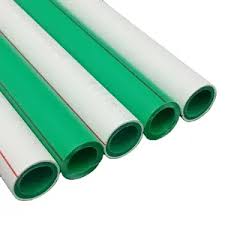Dec . 12, 2024 19:52 Back to list
ppr pipe used for factory
The Use of PPR Pipes in Industrial Factories
In recent years, industries have continually sought innovative solutions to enhance efficiency and sustainability in their operations. One such solution gaining traction is the use of Polypropylene Random Copolymer (PPR) pipes. These pipes have become a preferred choice for many factories due to their numerous advantages, including durability, resistance to chemicals, ease of installation, and overall cost-effectiveness.
Understanding PPR Pipes
PPR pipes are made from a type of plastic known as polypropylene, which is recognized for its versatility and resilience. Unlike traditional piping materials, PPR pipes are less prone to corrosion and scaling, making them an excellent choice for various industrial applications. Their random copolymer structure provides added flexibility and strength, allowing them to withstand significant temperature fluctuations and pressure variations.
Benefits of PPR Pipes in Factories
1. Durability and Longevity One of the hallmark features of PPR pipes is their impressive durability. They have a lifespan that can exceed 50 years when used correctly, which significantly reduces the need for frequent replacements. This longevity translates to lower maintenance costs and less downtime for factories, ultimately leading to increased productivity.
2. Chemical Resistance In many industrial settings, pipes are often subject to aggressive chemicals and substances that can lead to corrosion or degradation. PPR pipes boast excellent resistance to a wide range of chemicals, making them suitable for transporting chemicals, oils, and other corrosive substances without compromising their structural integrity.
3. Temperature Tolerance PPR pipes can handle temperatures ranging from -20°C to +95°C (-4°F to +203°F), making them suitable for hot water systems and various manufacturing processes. This capability ensures that factories can operate efficiently under different temperature conditions without the risk of pipe failure.
4. Lightweight and Ease of Installation The lightweight nature of PPR pipes makes them easier to handle and install compared to heavier materials like metal pipes. This advantage can lead to reduced labor costs and shortened installation times. Additionally, the joints in PPR piping systems can be heat-fused, creating a strong and leak-proof seal that enhances the overall reliability of the system.
ppr pipe used for factory

5. Energy Efficiency With the growing emphasis on sustainability, many factories are prioritizing energy-efficient systems. PPR pipes have lower thermal conductivity compared to metal pipes, which reduces heat loss in hot water systems. This property not only improves energy efficiency but also contributes to lower utility costs for factories.
Applications of PPR Pipes in Factories
PPR pipes find applications across various sectors in industrial settings
. They are commonly used in- Water Supply Systems Due to their corrosion resistance and health safety, PPR pipes are ideal for potable water applications. Factories can use them to ensure a clean and reliable water supply.
- Compressed Air Systems PPR pipes are also used in compressed air systems, where their ability to handle pressure without deformation is crucial.
- Chemical Transport Given their chemical resistance, PPR pipes are often employed for transporting a range of chemicals safely and efficiently.
- Heating Systems Many factories utilize PPR pipes in their heating systems for transporting hot water, thanks to their high-temperature tolerance.
Conclusion
The adoption of PPR pipes in industrial factories highlights a significant shift towards more effective and sustainable piping solutions. With their durability, chemical resistance, and energy efficiency, PPR pipes are increasingly becoming a staple in modern manufacturing operations. As industries continue to evolve, the use of advanced materials like PPR will likely play a vital role in enhancing productivity while also promoting environmental sustainability. Embracing such innovative solutions is not just a trend; it is a necessity for factories aiming to thrive in a competitive and eco-conscious market.
-
High-Quality PVC Borehole Pipes Durable & Versatile Pipe Solutions
NewsJul.08,2025
-
High-Quality PVC Perforated Pipes for Efficient Drainage Leading Manufacturers & Factories
NewsJul.08,2025
-
High-Quality PVC Borehole Pipes Durable Pipe Solutions by Leading Manufacturer
NewsJul.08,2025
-
High-Quality PVC Borehole Pipes Reliable PVC Pipe Manufacturer Solutions
NewsJul.07,2025
-
High-Quality UPVC Drain Pipes Durable HDPE & Drain Pipe Solutions
NewsJul.07,2025
-
High-Quality Conduit Pipes & HDPE Conduit Fittings Manufacturer Reliable Factory Supply
NewsJul.06,2025

